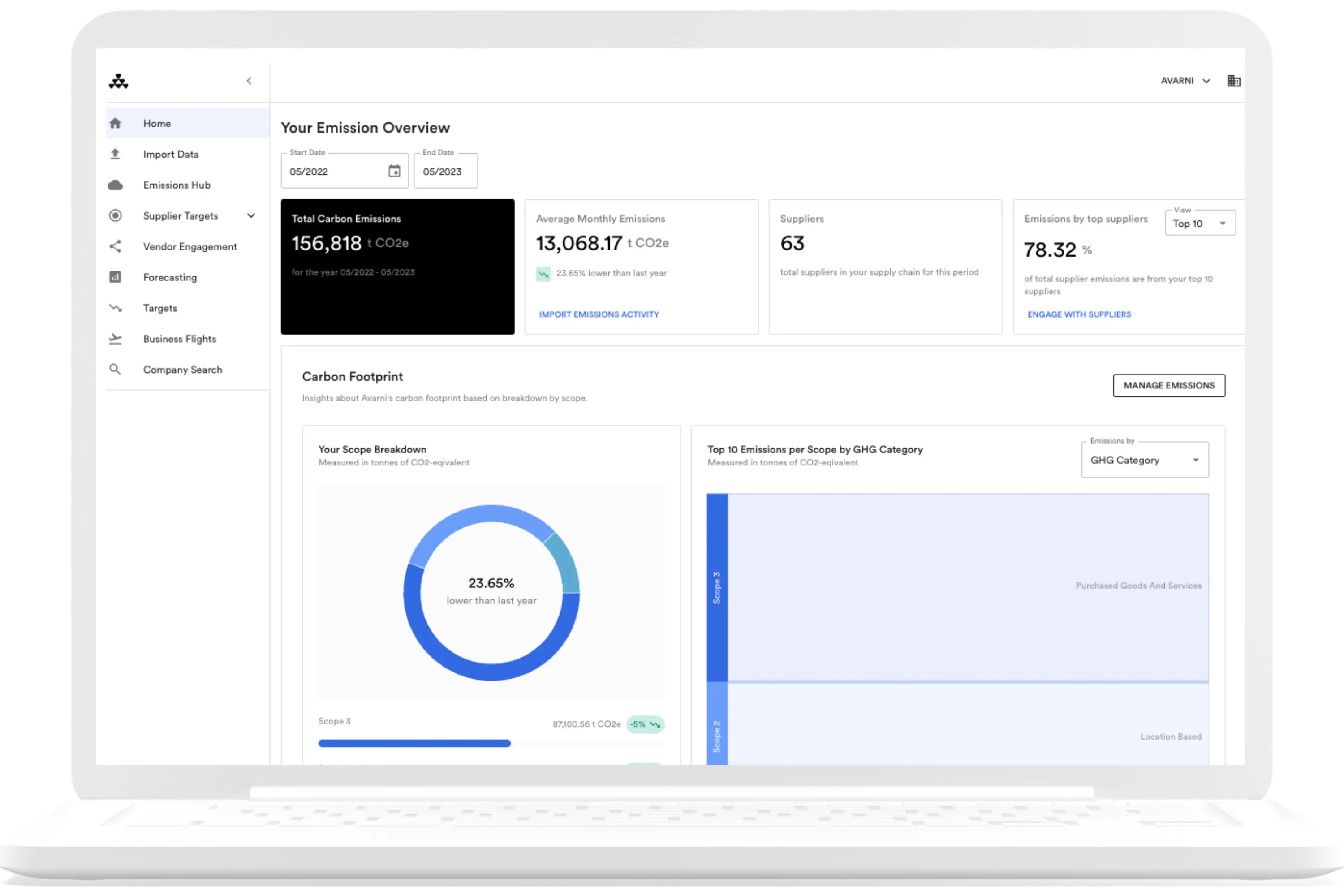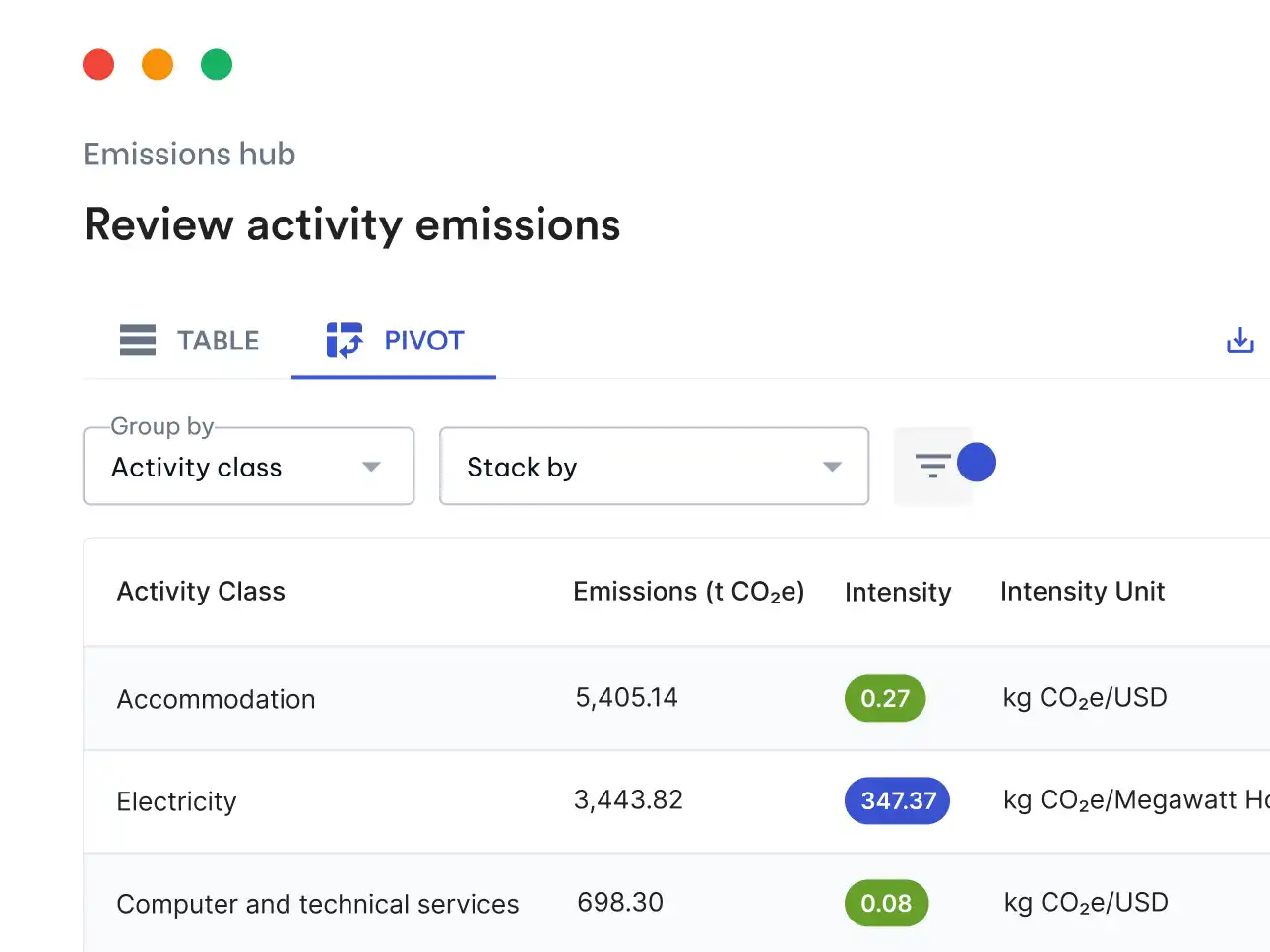Climate change is a critical issue facing the world today, and reducing greenhouse gas emissions is a key solution. Companies have a duty to reduce their carbon emissions to safeguard our planet for future generations. Moreover, governments around the world are proposing carbon taxes, which present a financial risk to companies and their shareholders. In this article, we will explore how to identify and measure your company's carbon emissions, and strategies for reducing them.
Identify the sources of your company’s carbon emissions
The first step is to measure your company's total current carbon emissions. To do this, you will need to consider the sources of emissions from your company's operations, such as energy use, transportation, and waste disposal. You should also consider the emissions associated with the production of goods and services that your company sells. These are broken-up into three types of emissions:
- Scope 1 emissions — the direct greenhouse (GHG) emissions that occur from sources that are controlled or owned by your company (for example, emissions associated with fuel combustion in boilers, furnaces, and vehicles).
- Scope 2 emissions — the indirect GHG emissions associated with the purchase of electricity, steam, heat, or cooling.
- Scope 3 emissions — all indirect emissions that come from activities that occur in your company’s supply chain, but are not directly controlled by your company. These sources include the use of purchased goods and services, fuel- and energy-related activities, employee business travel, waste generated from operations, transport-related activities, and the use of leased assets. On average, Scope 3 emissions account for over 80% of an organization's emissions.
Measure your company’s carbon emissions
Once you have identified the sources of your emissions, you can use carbon management software to effectively measure them. A good solution will allow you to simply upload your spend data (procurement spend, utility bills, fuel receipts), or connect to your existing finance applications. It will then take the financial value of your purchased good or service and multiply it by an emission factor – the amount of emissions produced per financial unit – resulting in an estimate of the emissions produced. This will automatically calculate your company’s total emissions, and allow you to visualise its carbon footprint.
Because the vast majority of your company’s emissions likely come from its value chain, you should seek out a carbon management software solution that allows your suppliers to upload their own Scope 1-3 emissions into the platform. This will save time and effort on your part, while providing a comprehensive view of your value chain emissions and ensuring that all emissions associated with your organisation are accounted for. From there, you’ll be able to identify hotspots in your supply chain and start working on emissions reduction strategies.
Develop emissions reduction strategies
Once you have measured your company's carbon emissions, you can begin to develop strategies for reducing them. One way to do this is to forecast what your future emissions will look like under a number of different scenarios. Depending on the type of industry you are in, there are various scenarios you can test. For example:
- Switching to renewable energy sources such as solar or wind to help reduce energy-related emissions.
- Investing in energy efficiency measures such as insulation and energy-efficient lighting to also help reduce energy use.
- Reducing the amount of transportation associated with your business by using more efficient shipping methods or working with suppliers that are closer to your company.
This will allow you to compare the carbon performance of suppliers in the same categories to each other, and create a carbon reduction plan that aligns your suppliers' targets with your own net zero targets, so you can work collaboratively to reduce your shared emissions over time. For more info, see: 5 ways to engage your supply chain on Scope 3 emissions.
Consider a carbon offset program
Finally, you might want to consider implementing a carbon offset program. This involves investing in projects that reduce emissions elsewhere, such as planting trees that absorb carbon dioxide or investing in renewable energy projects. Offsetting your company's carbon emissions can help make up for any emissions that your company is unable to reduce. While your primary focus should be reducing your Scope 1-3 carbon emissions, a carbon offset program can be a useful supplement.
Let Avarni help you to measure and reduce your company’s carbon emissions
Avarni is an AI-driven carbon management software solution used by some of the world’s biggest companies. Our comprehensive calculation methodology and data collation technology automates your emissions management. Avarni empowers you to:
- Perform emissions analysis from spend & activity data, using a proprietary world-first natural language processing AI. This completely automated process makes it easy to analyse hotspots in your supply chain, without having to spend weeks or months preparing the data beforehand.
- Integrate with over 1,000 third-parties, making it easy to import your data from leading software platforms including Coupa, Microsoft Power BI, NetSuite, Oracle, QuickBooks, Salesforce, SAP, ServiceNow, and Xero.
- Seamlessly onboard your suppliers at no cost. By allowing suppliers to easily calculate their own emissions from Scope 1-3, and set their own SBTis, you create a complete picture of your own value chain emissions.
- Forecast your Scope 3 emissions, and model changes in your supply chain emissions over time by considering external factors such as hypothetical vendor SBTis, or adding parameters for a renewable energy transition in a particular geography, and understand the financial costs under different scenarios by setting carbon prices. AI-powered forecasting ensures that vendor SBTis are automatically included in the BAU scenario.
- Create detailed emissions reports for all your stakeholders, and export data for reporting in line with CDP, TCFD, GHG Protocol, GRI & other global standards and frameworks.

Get in touch with us to see how Avarni can help you to effectively measure and reduce your company’s carbon emissions.





